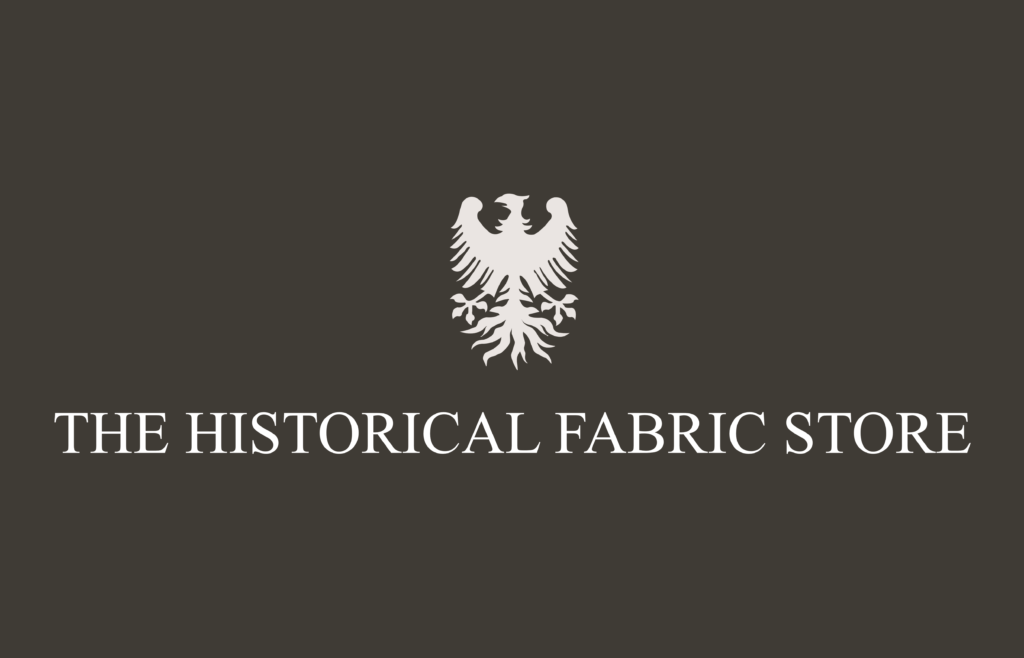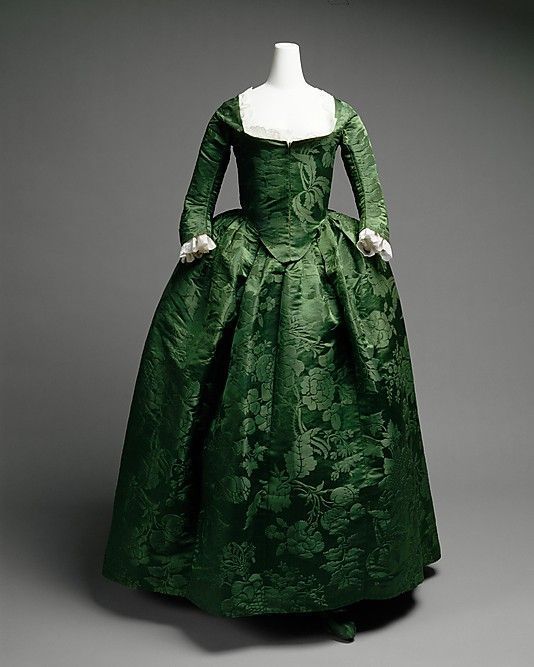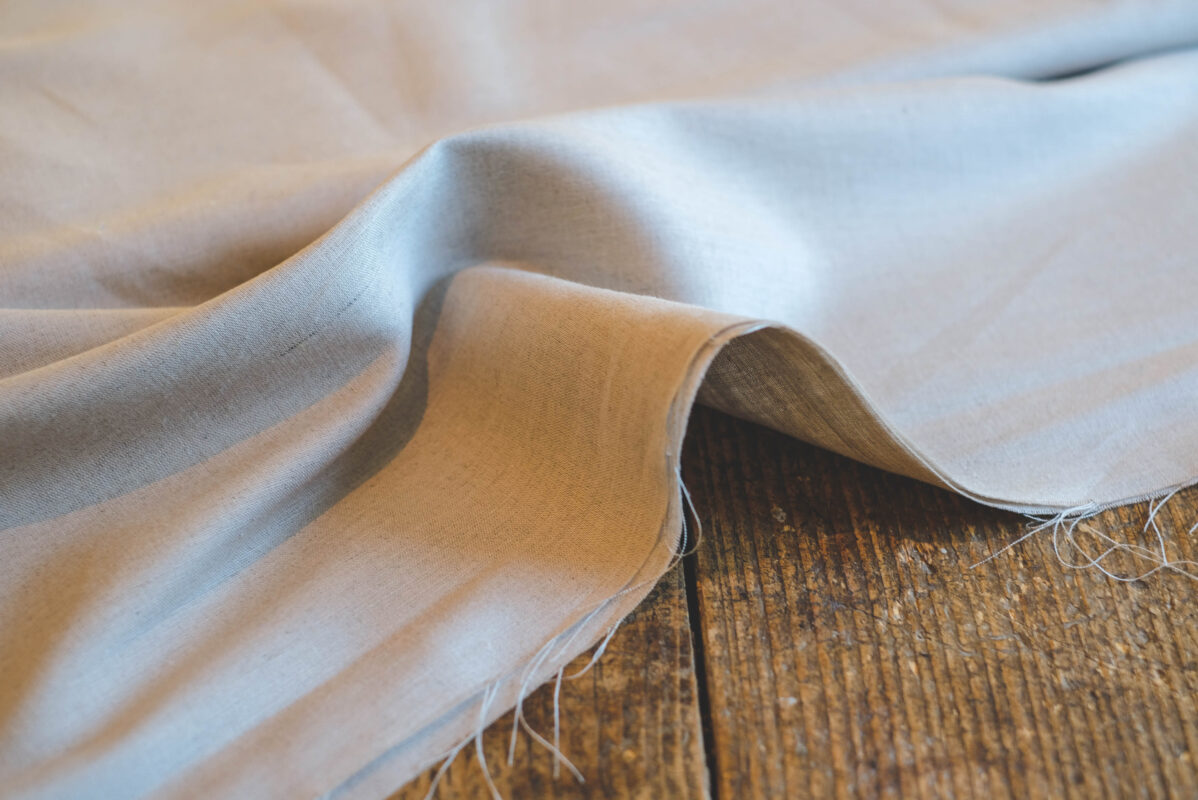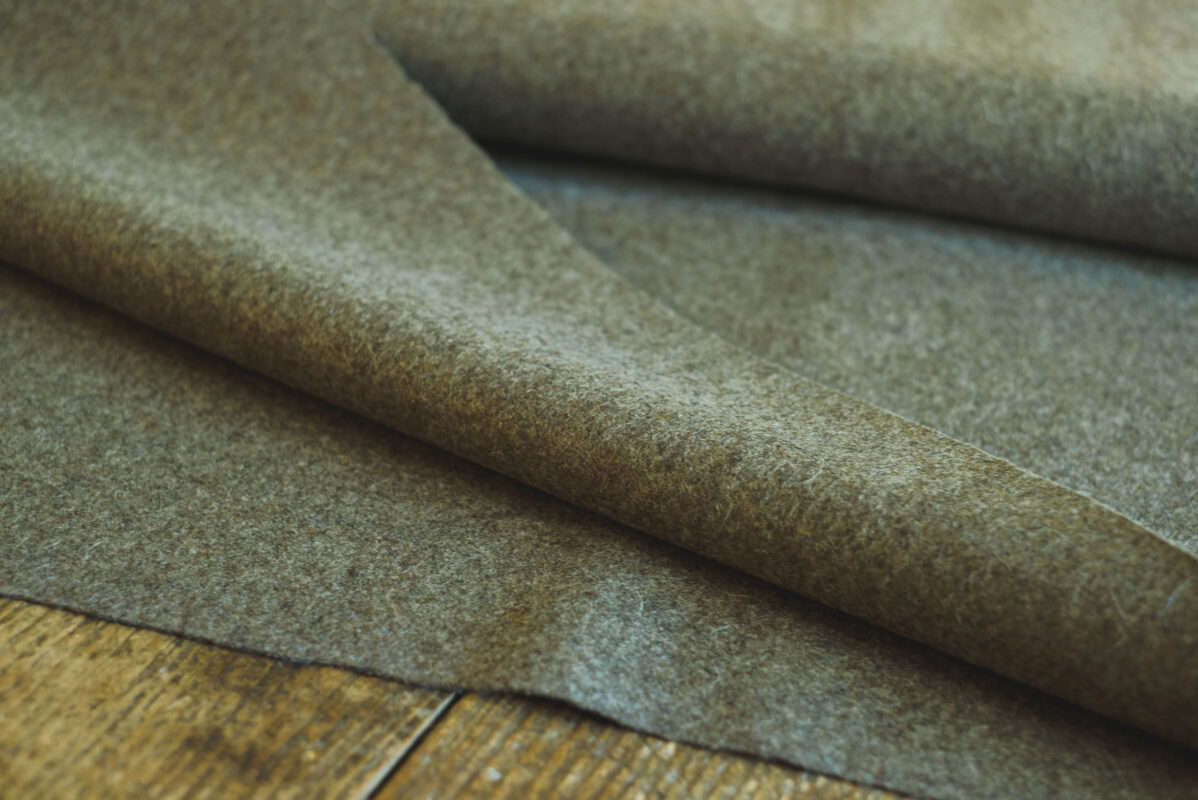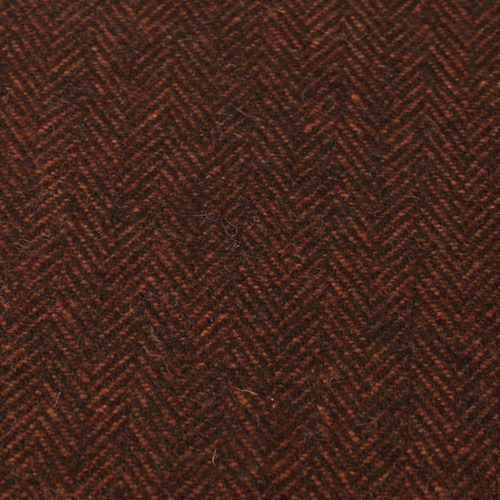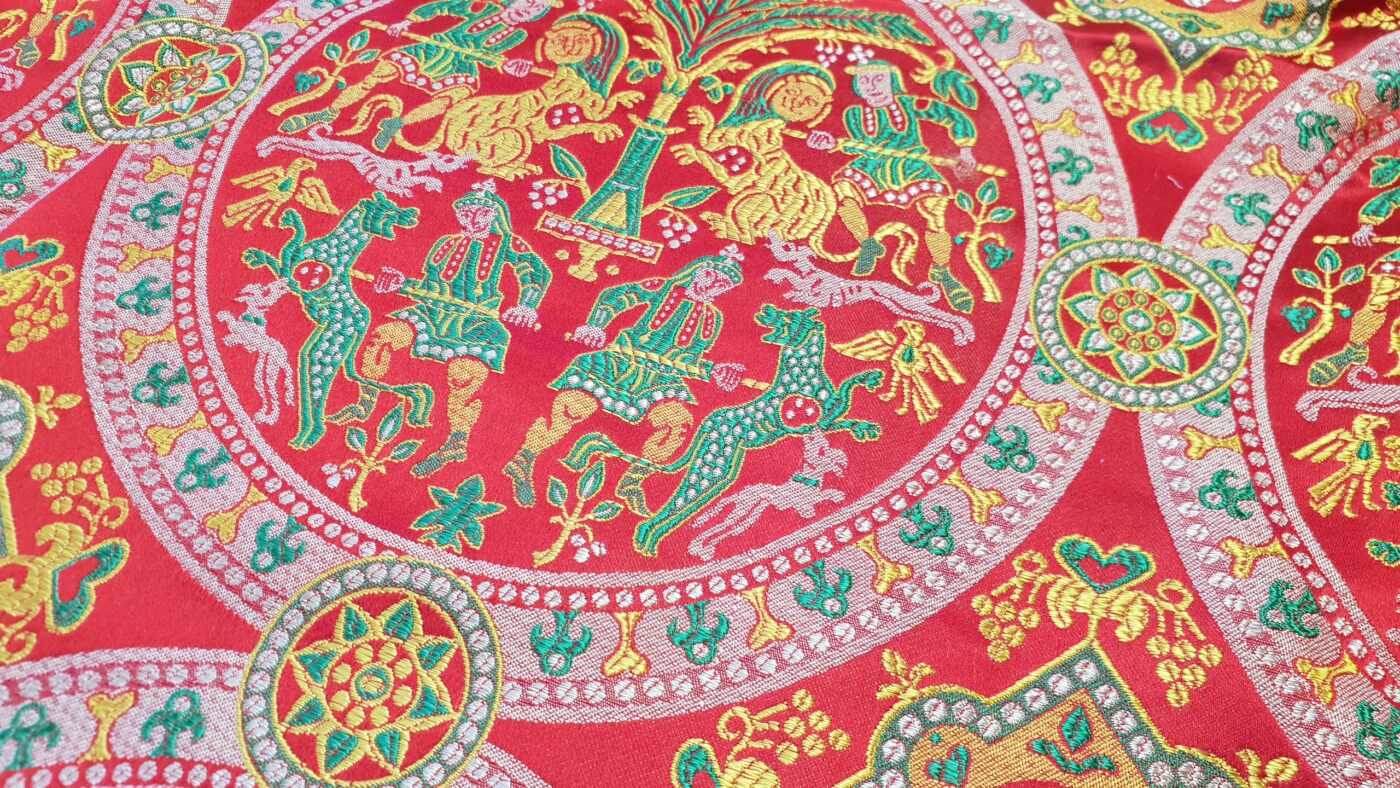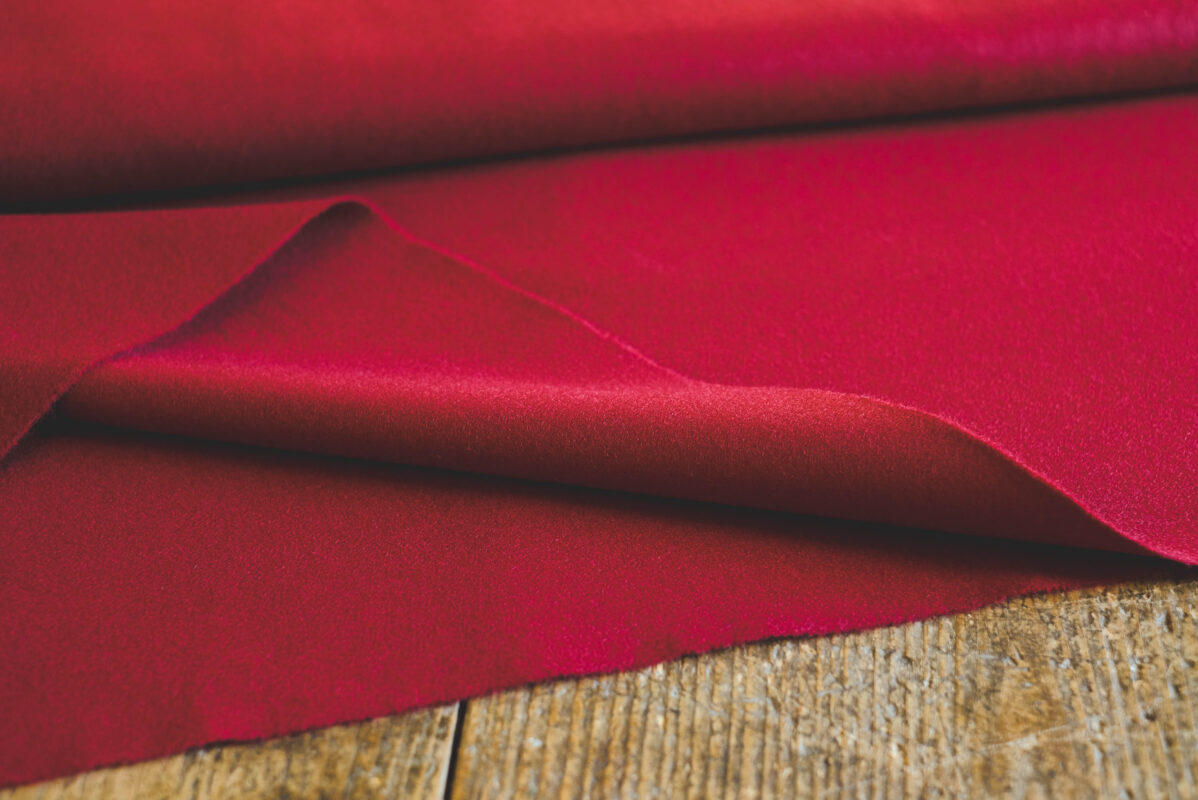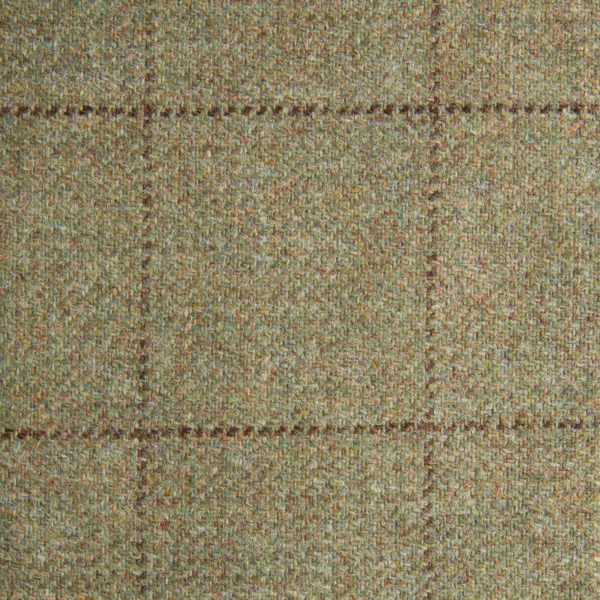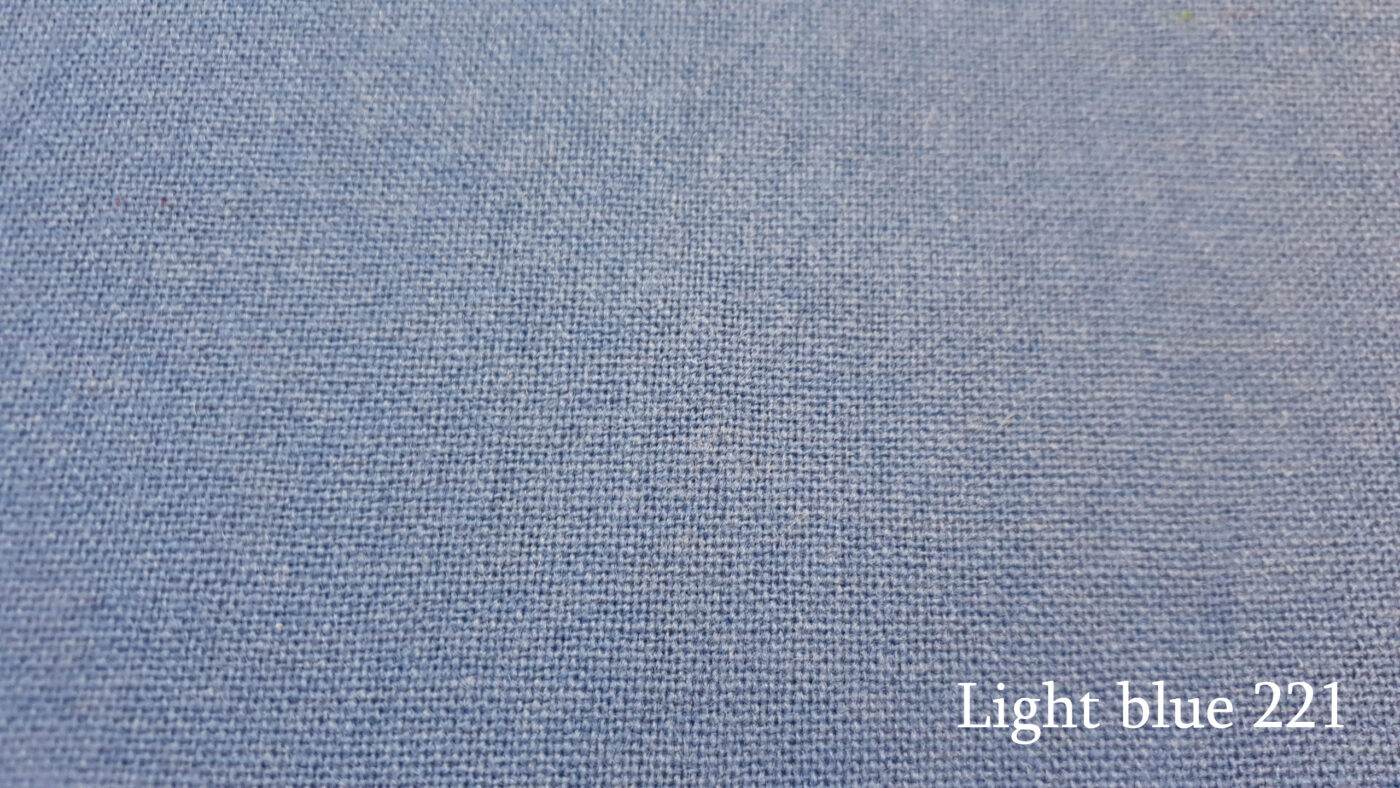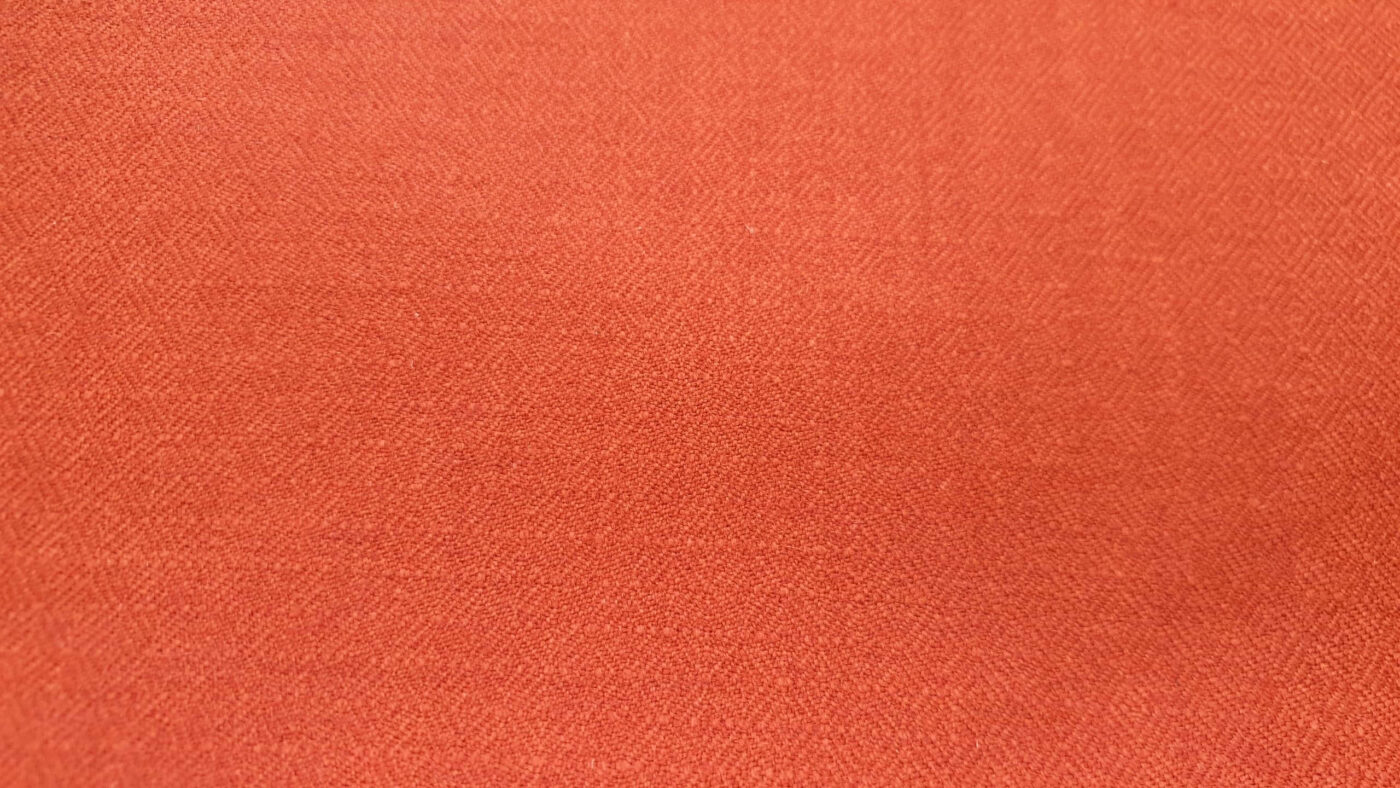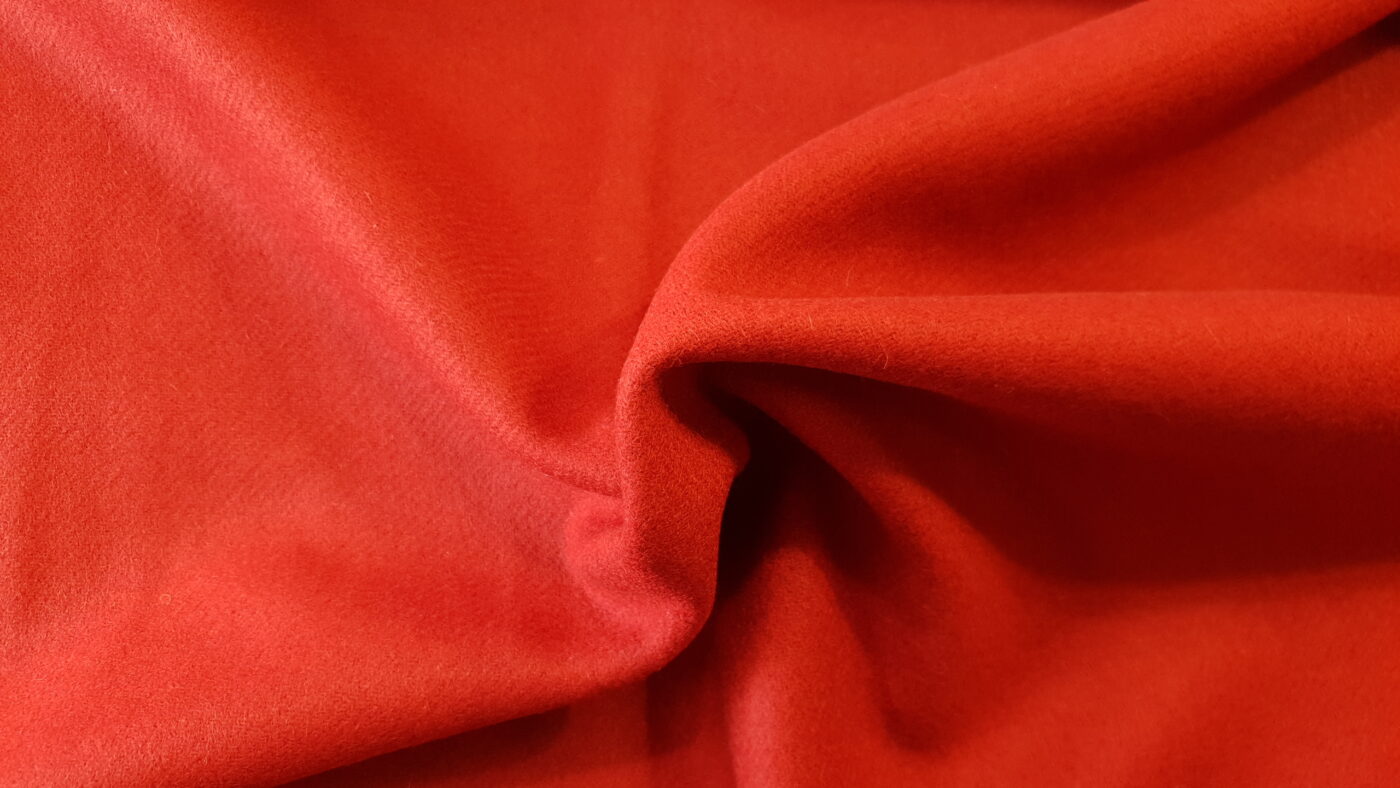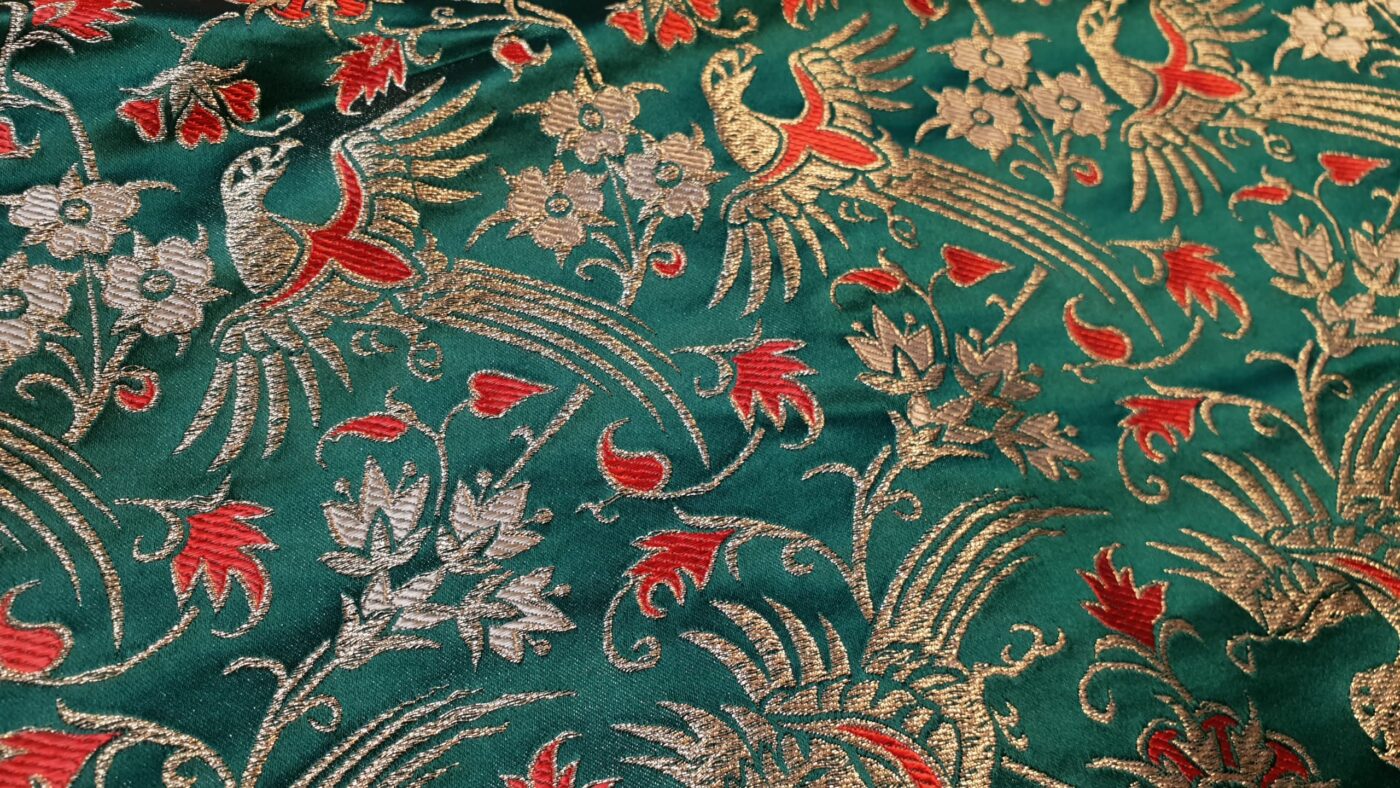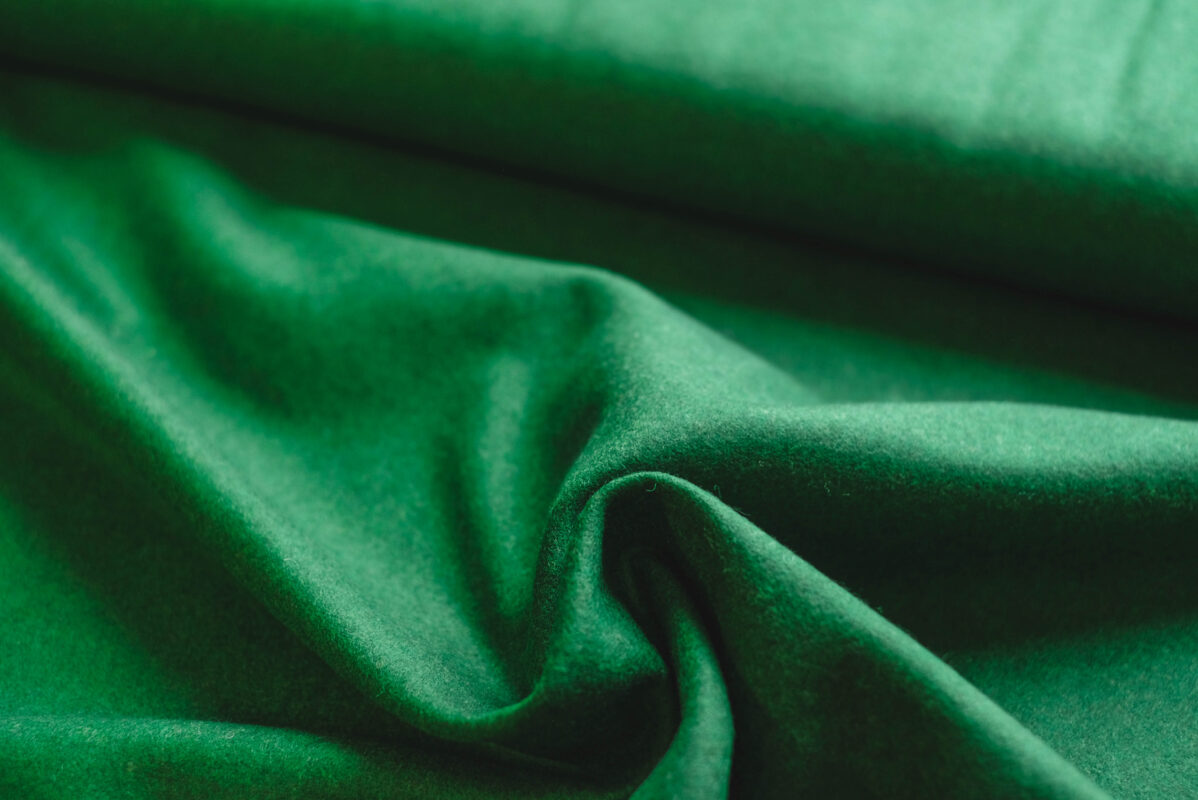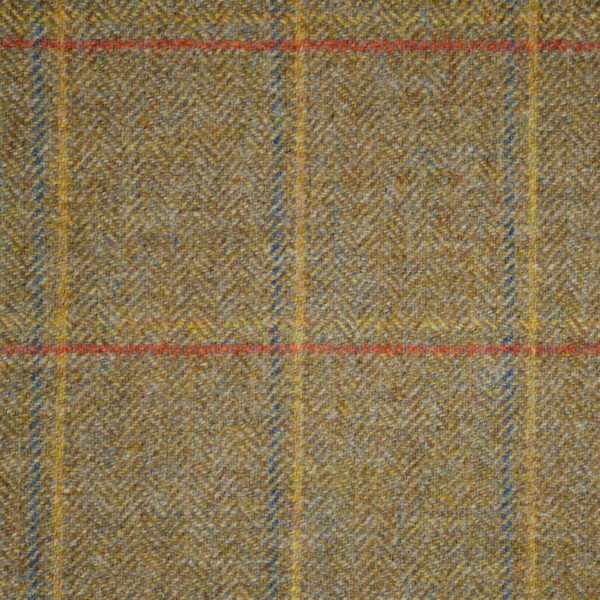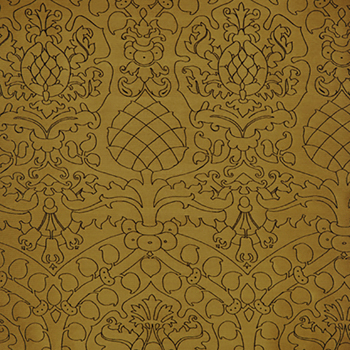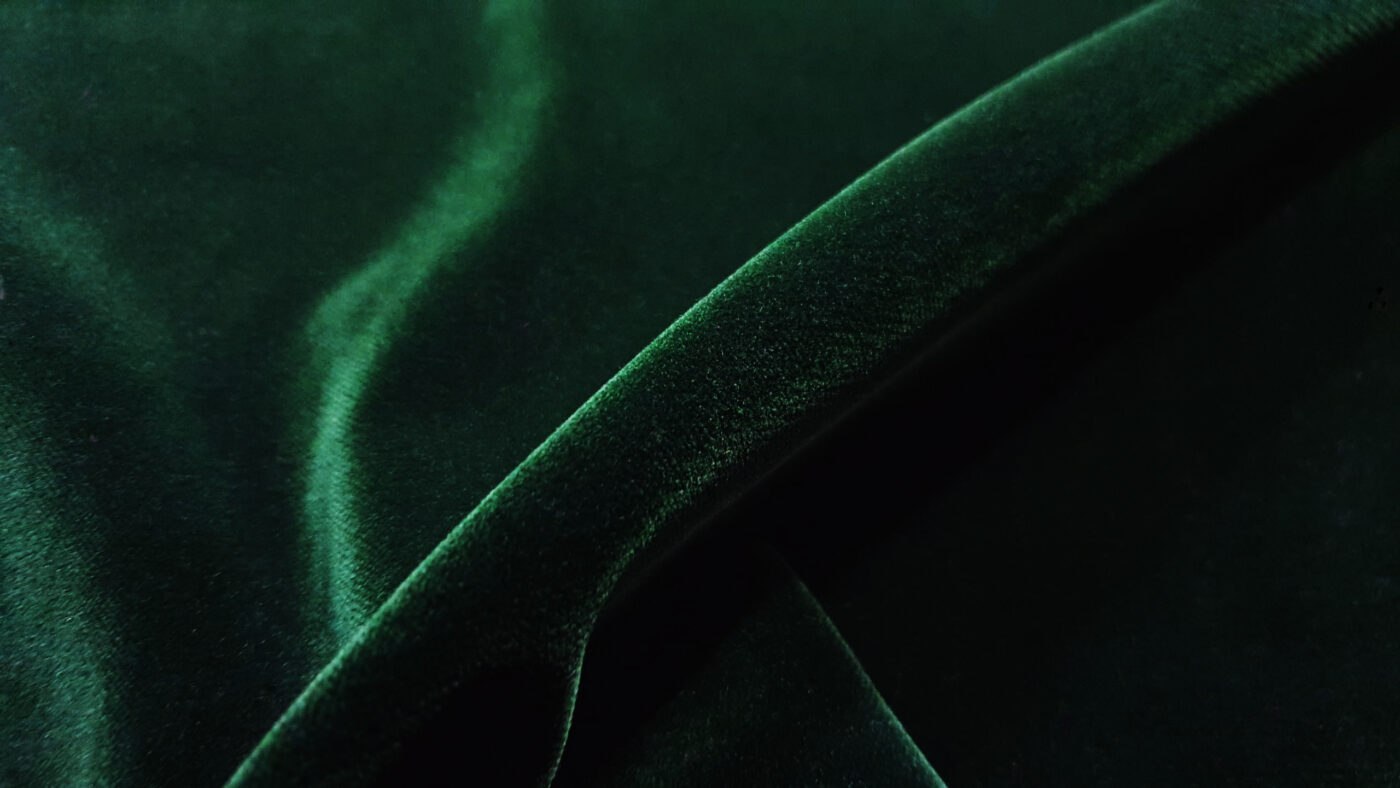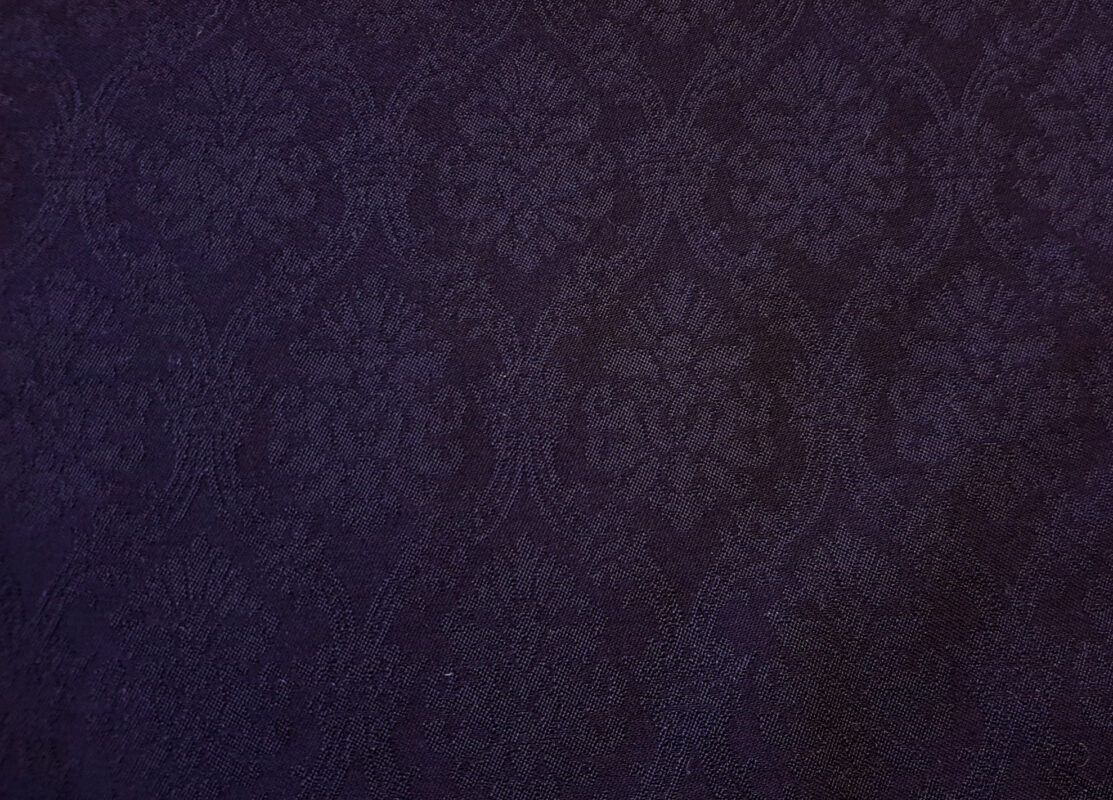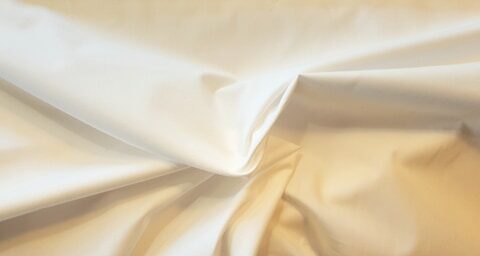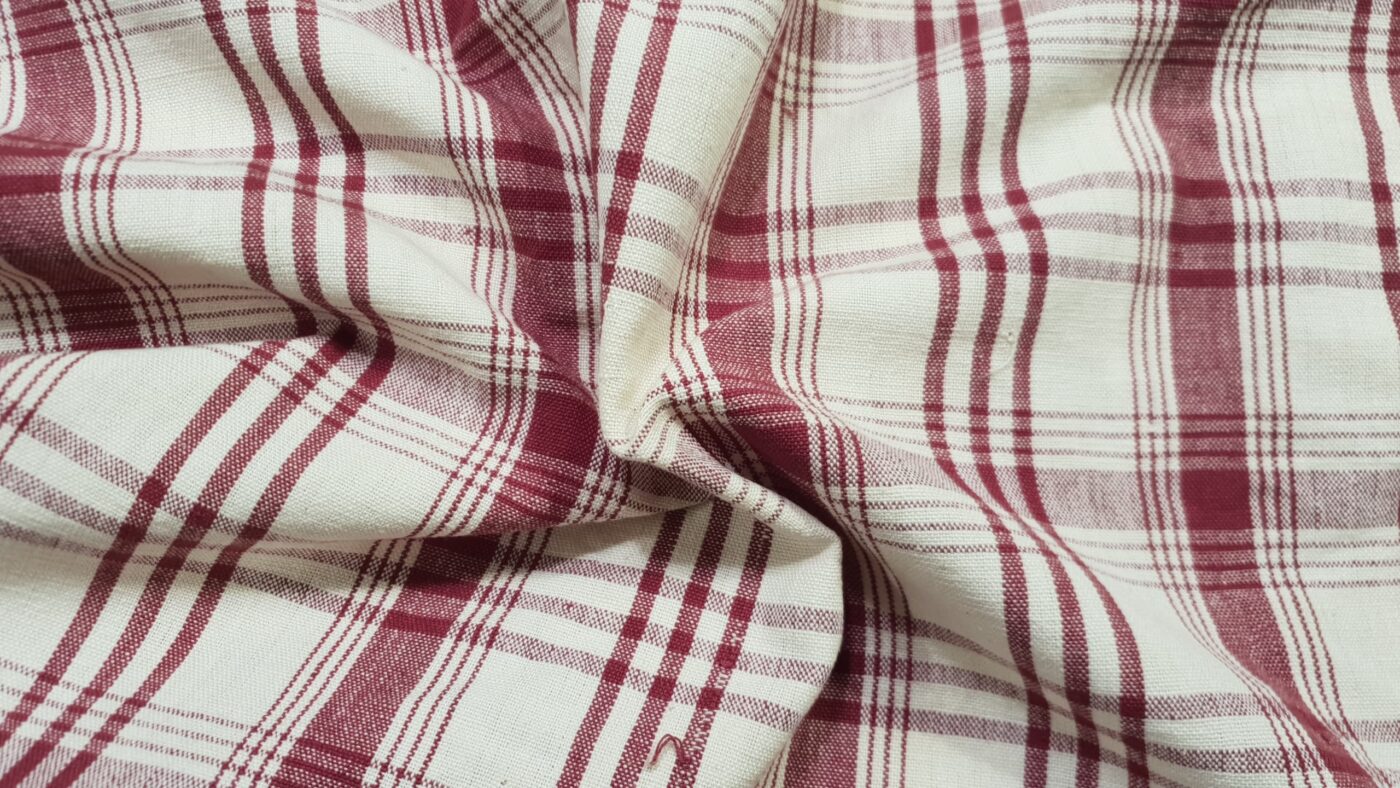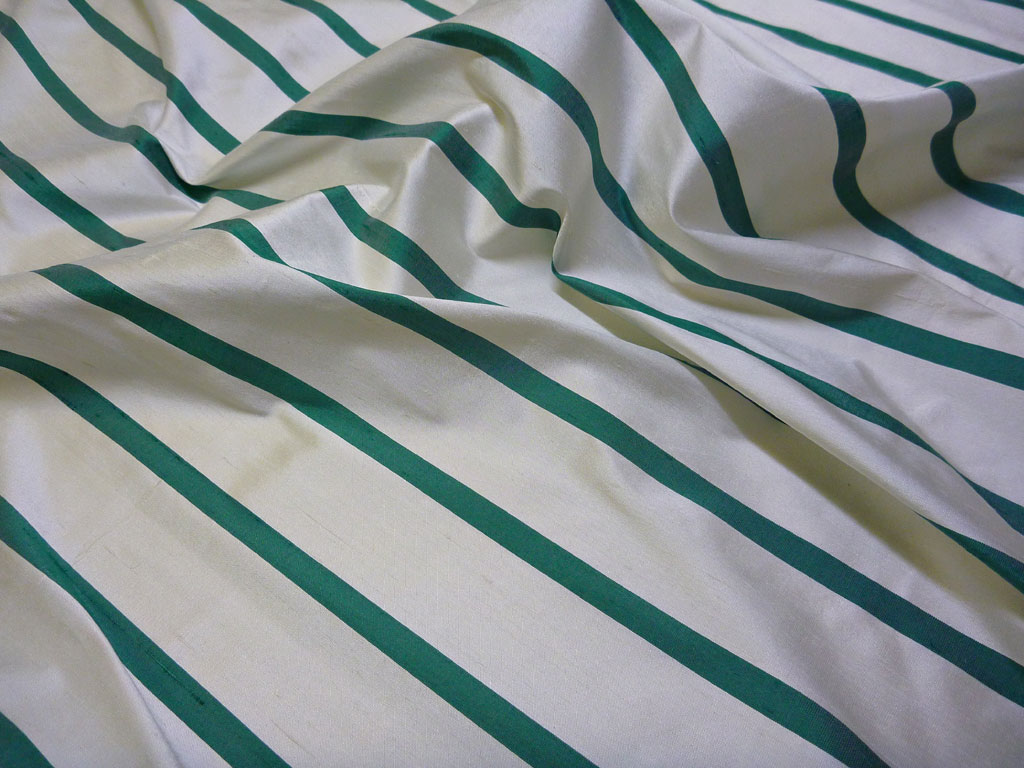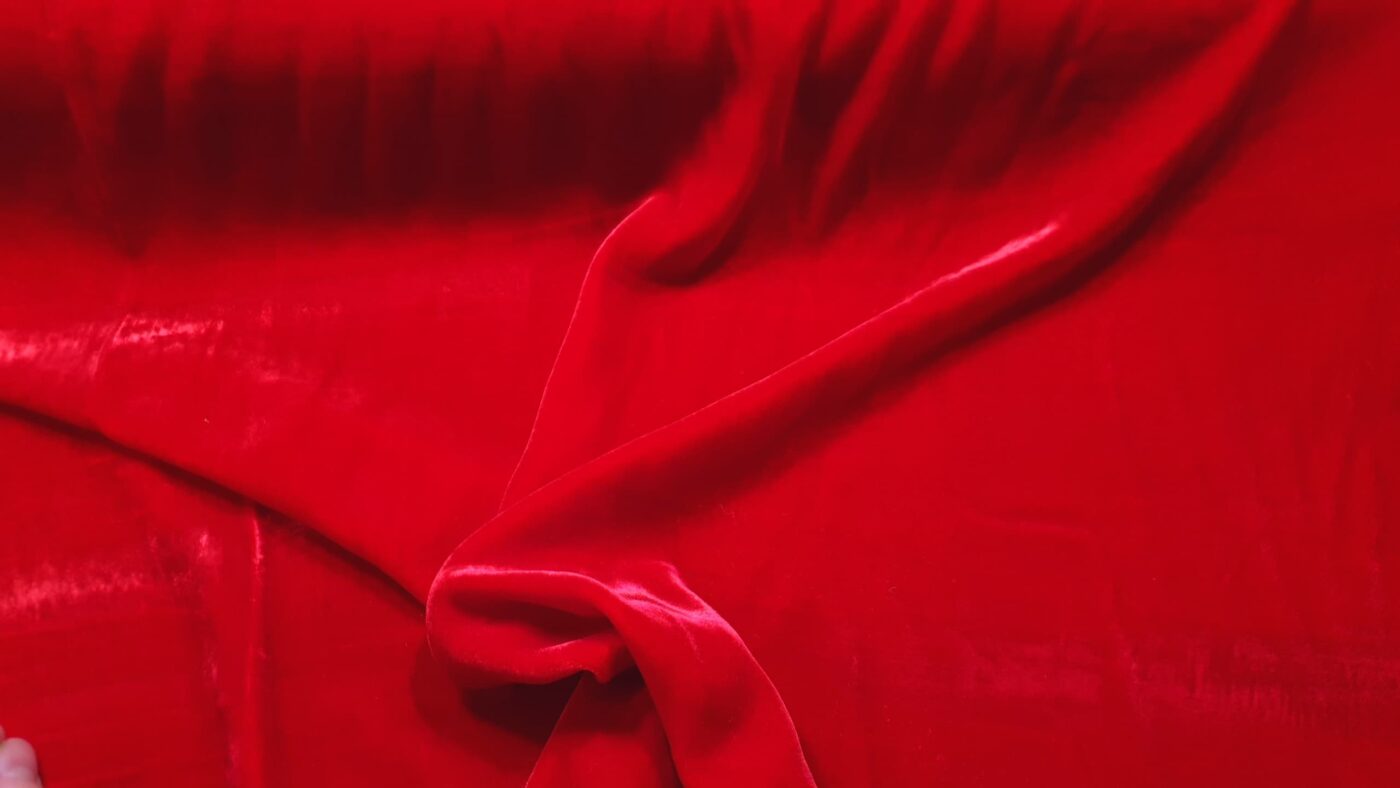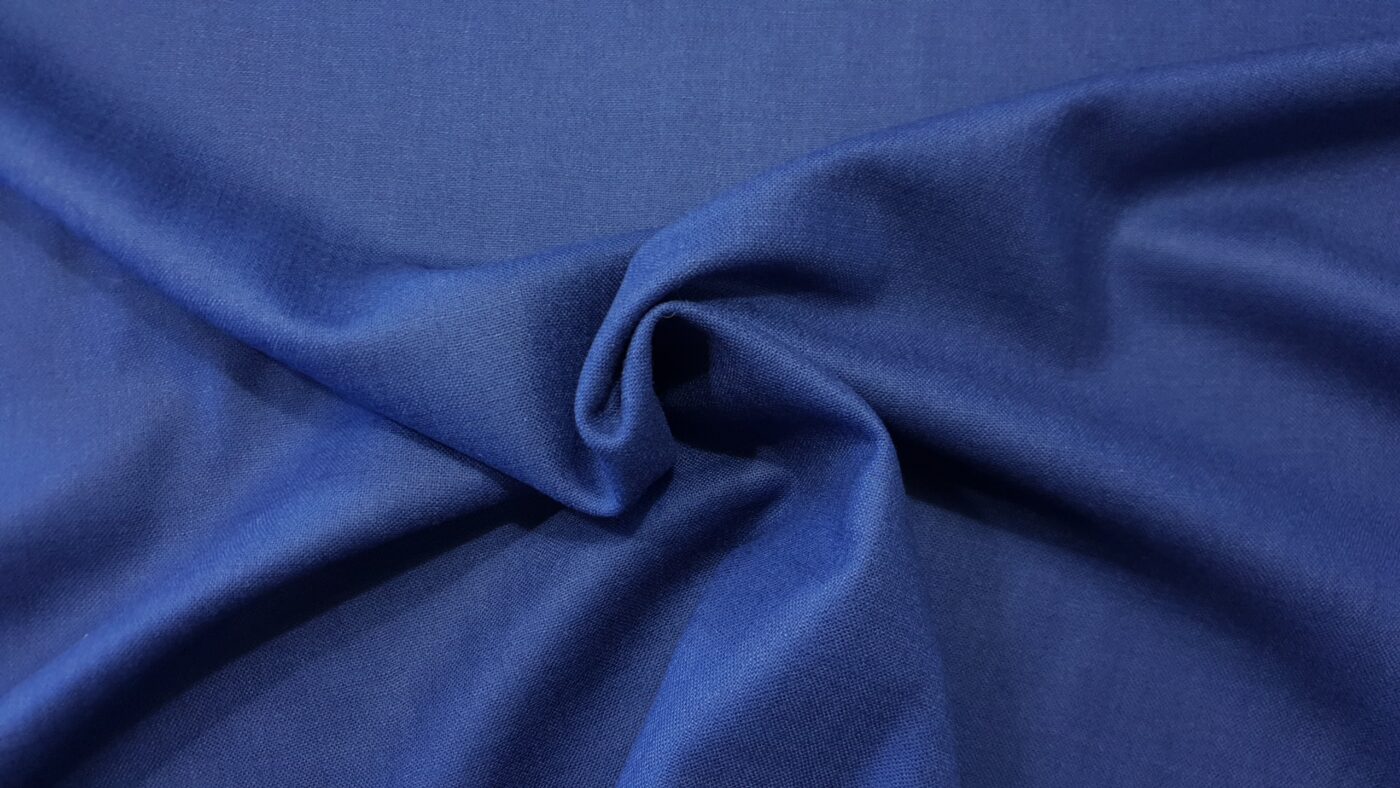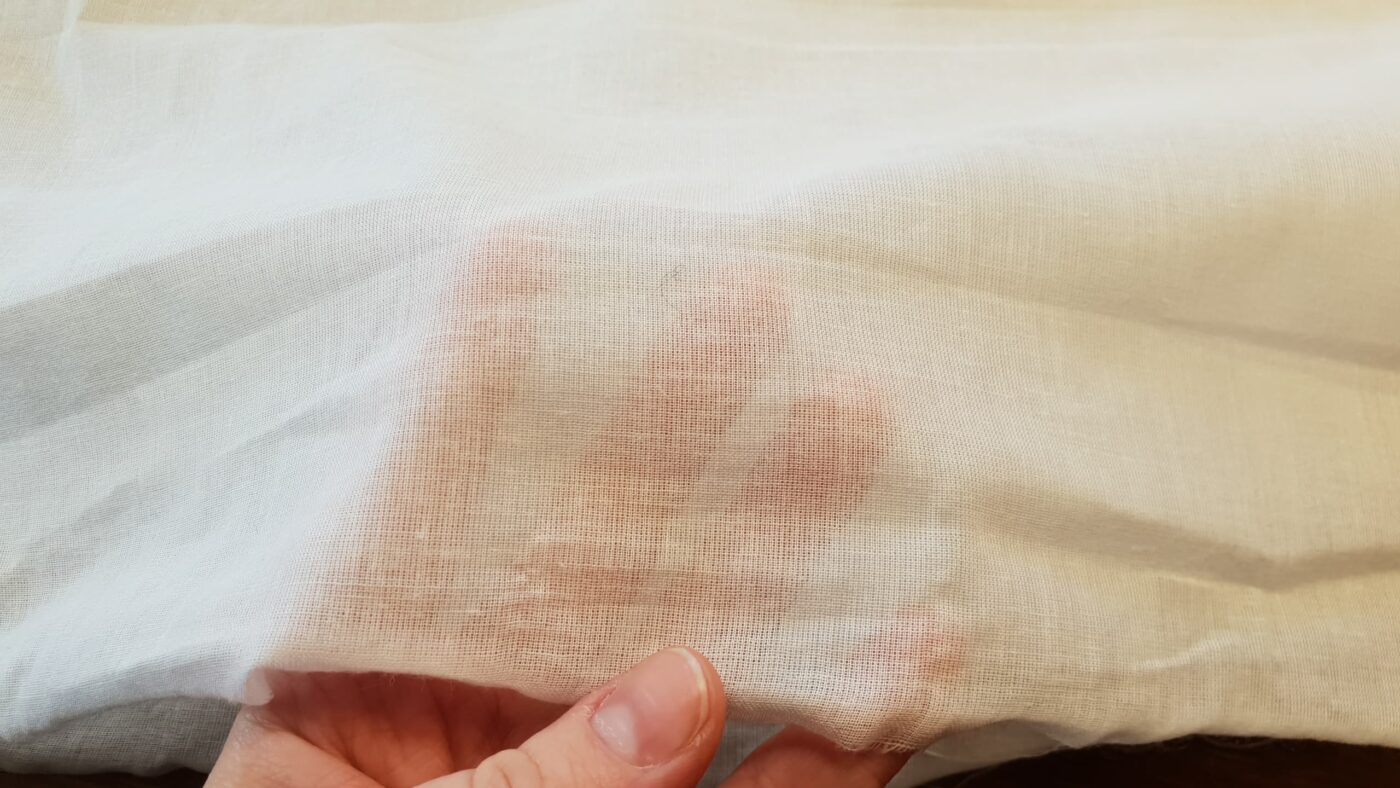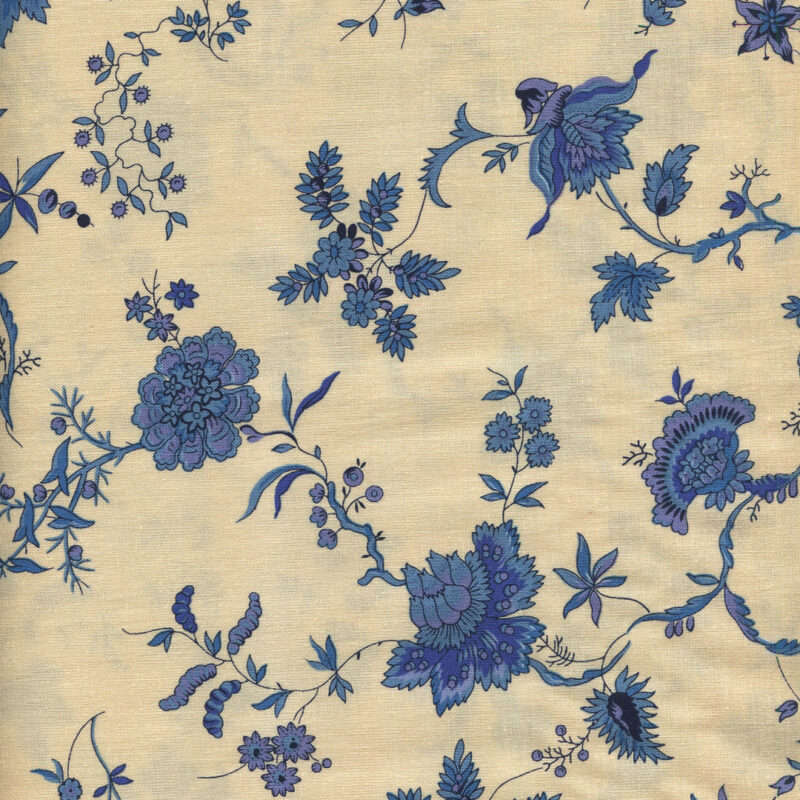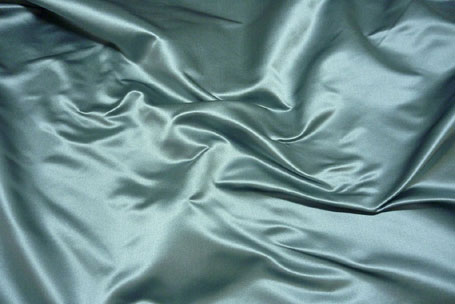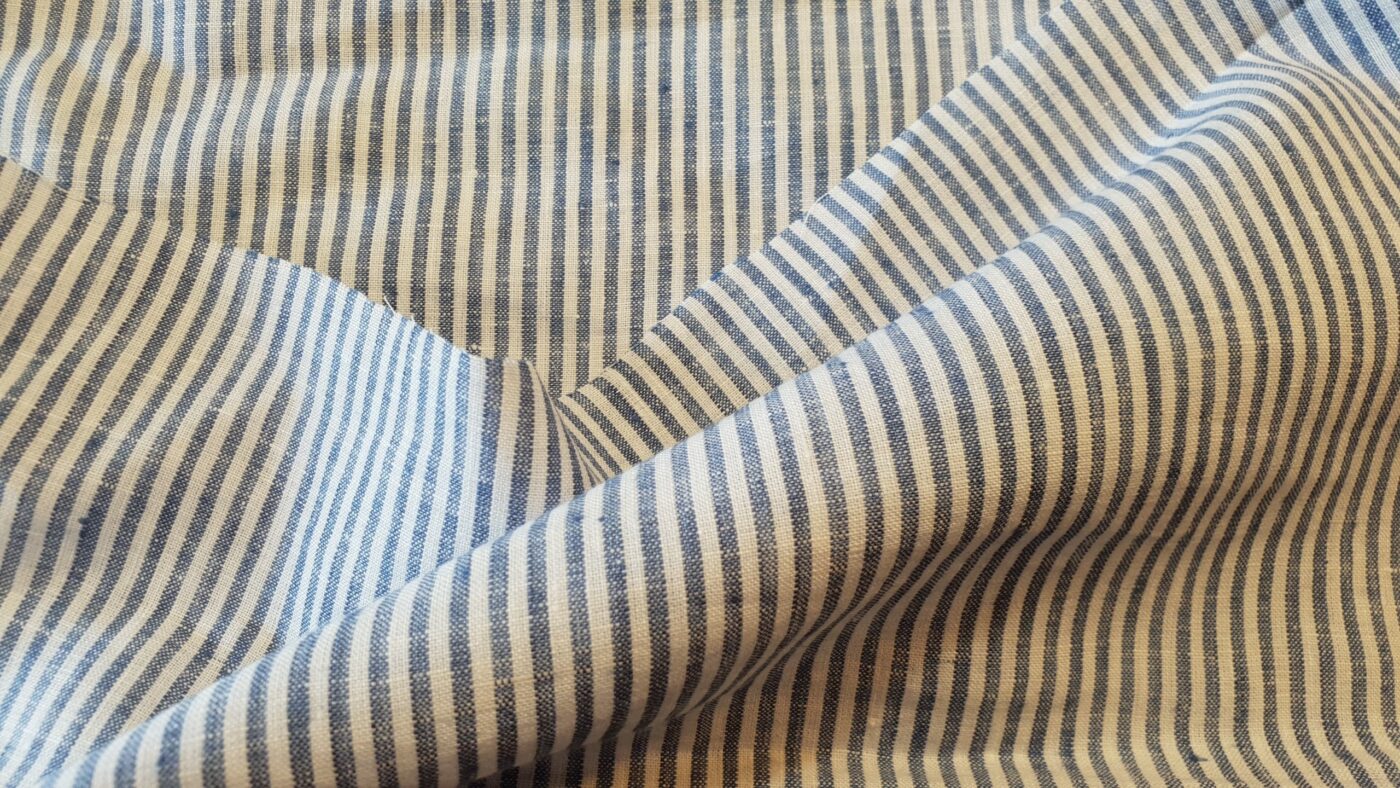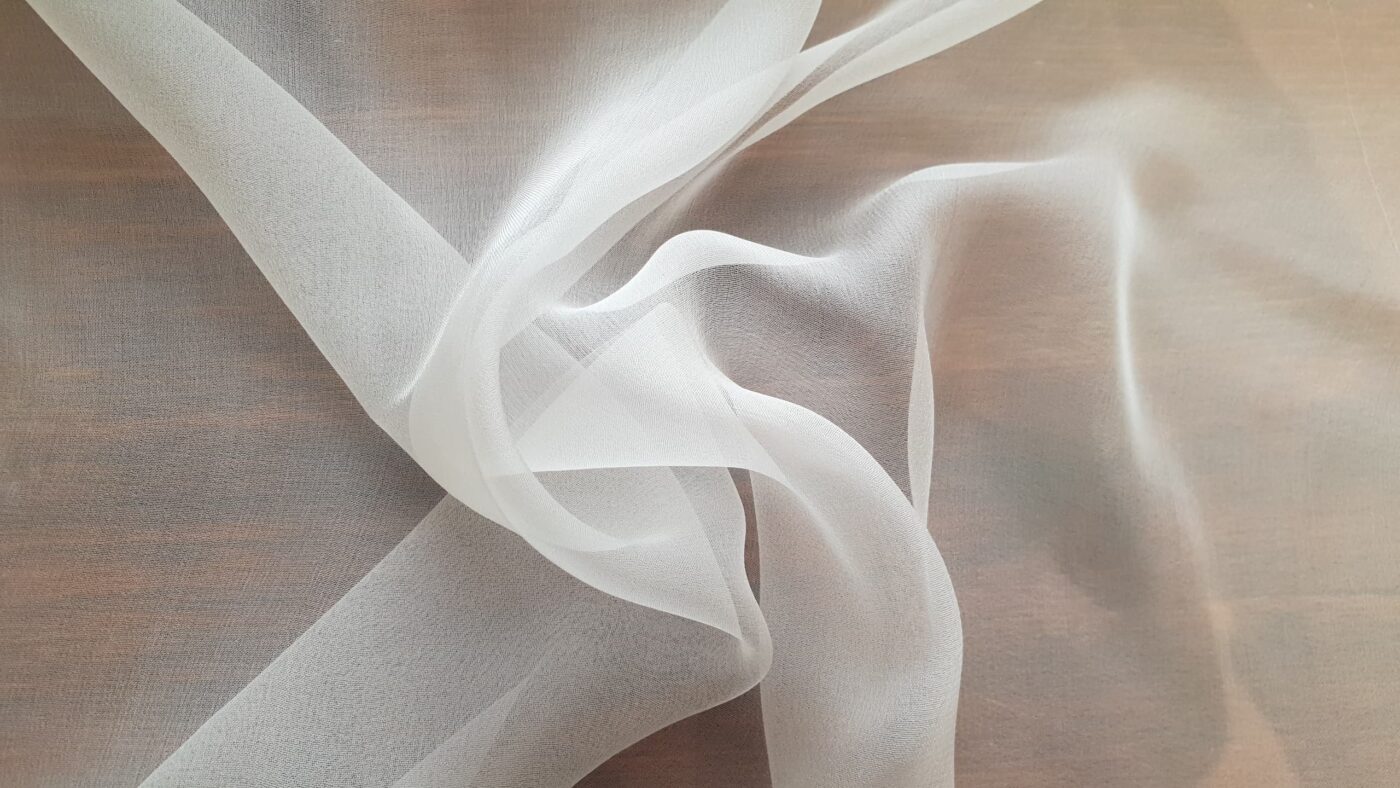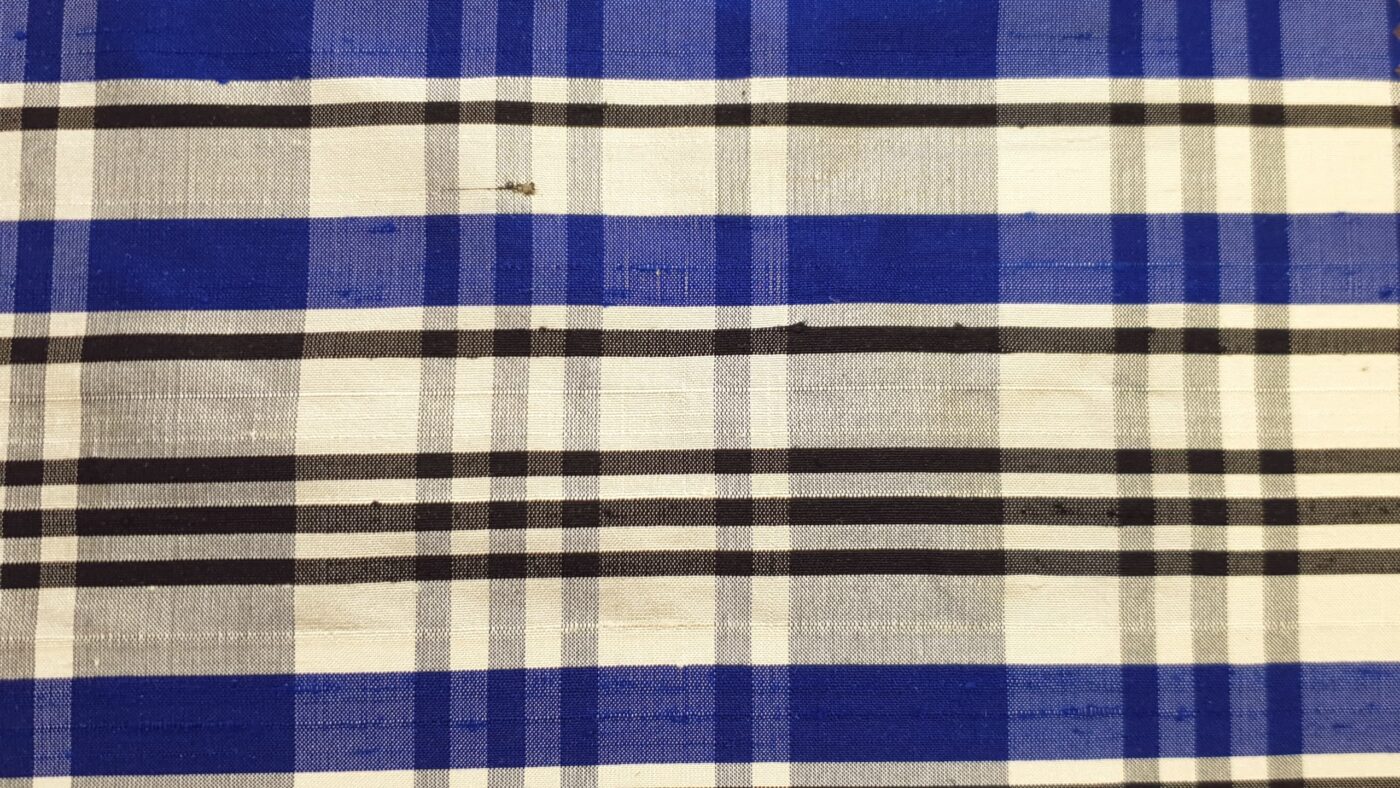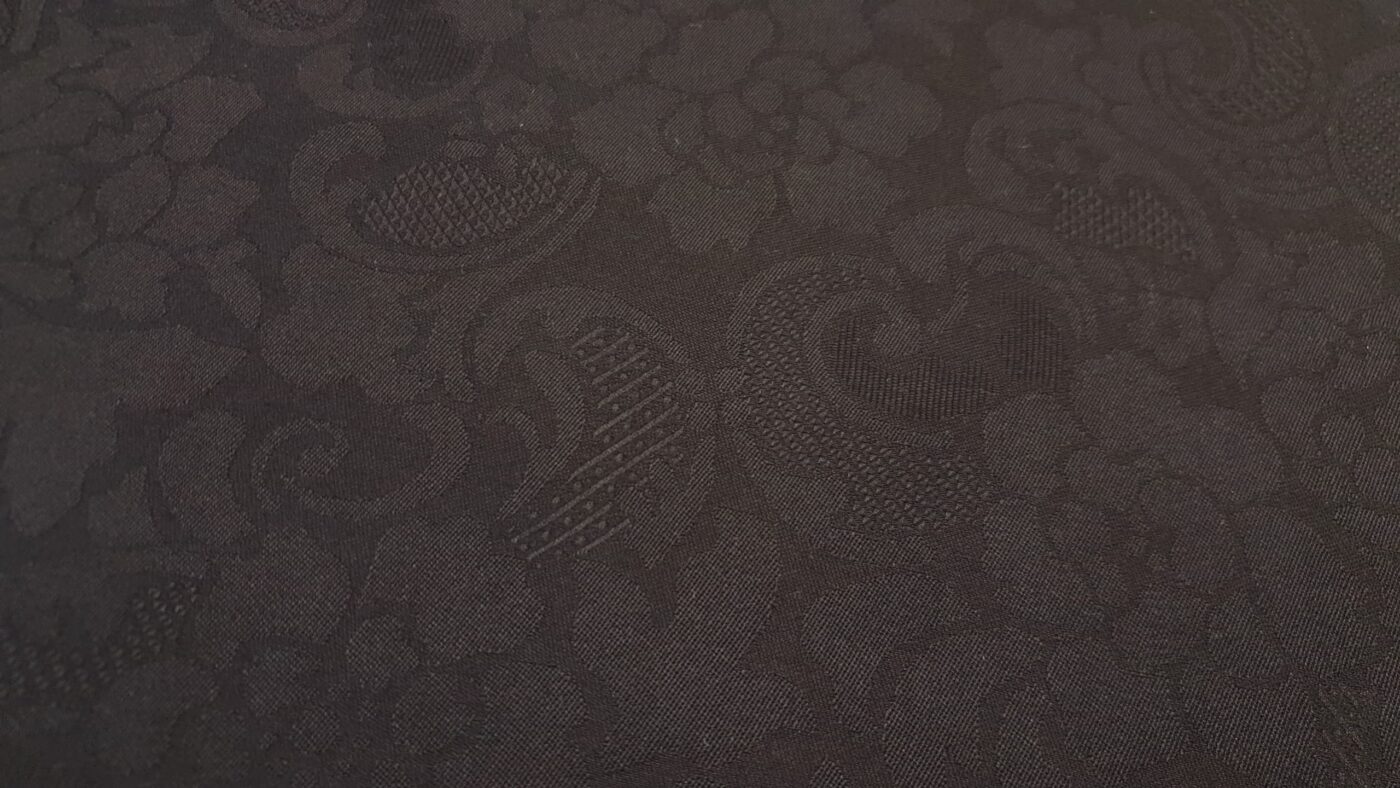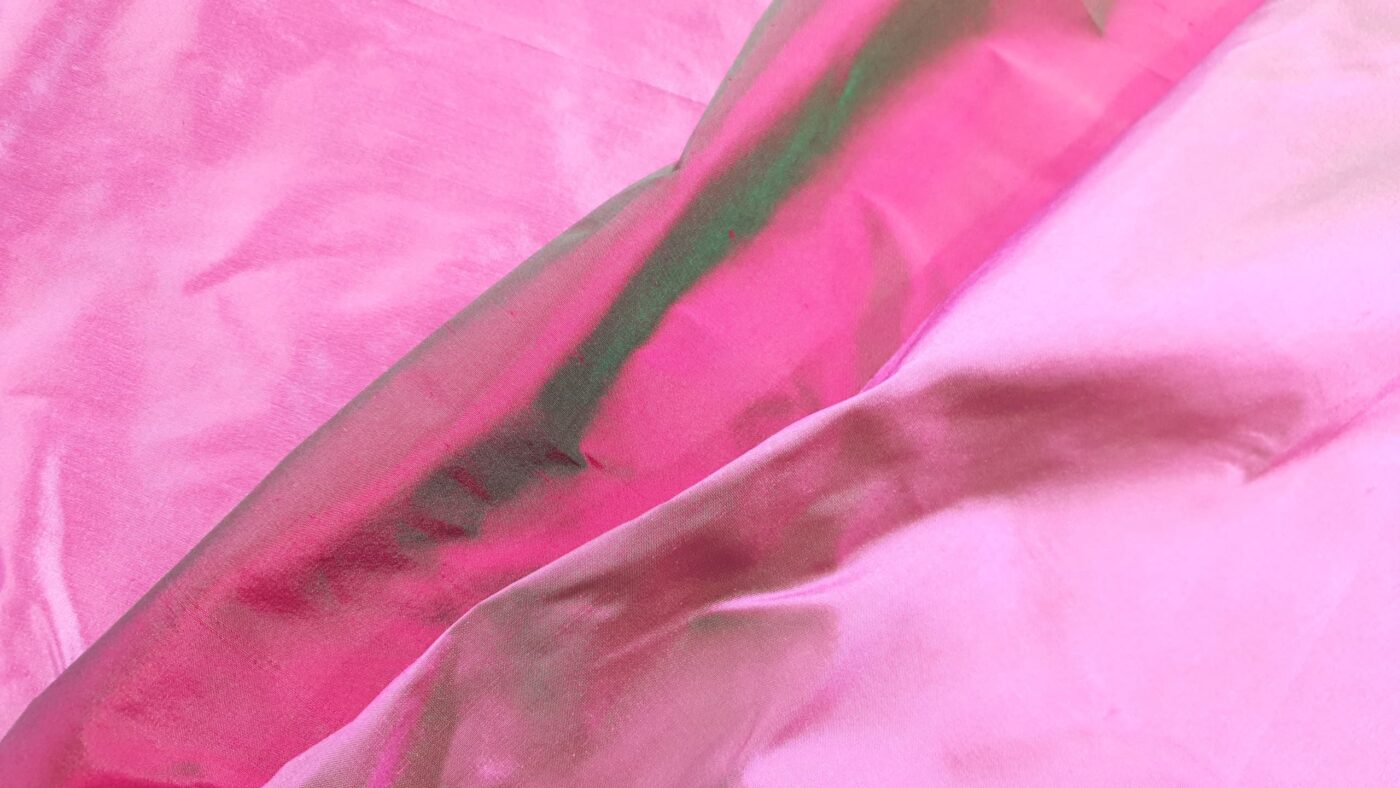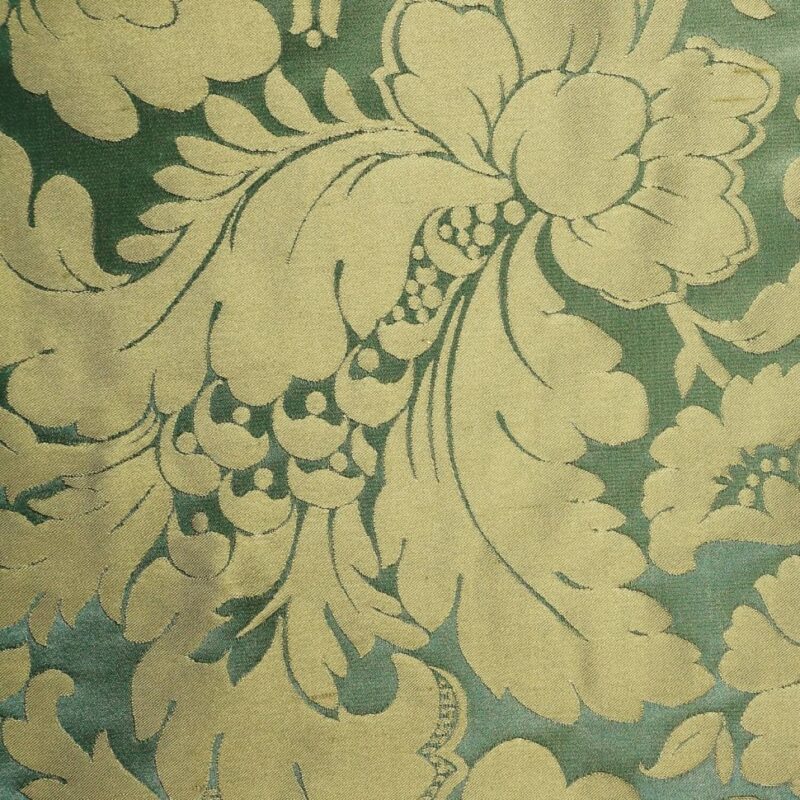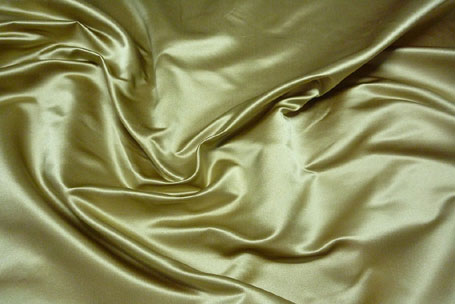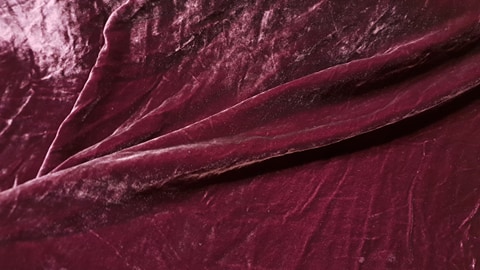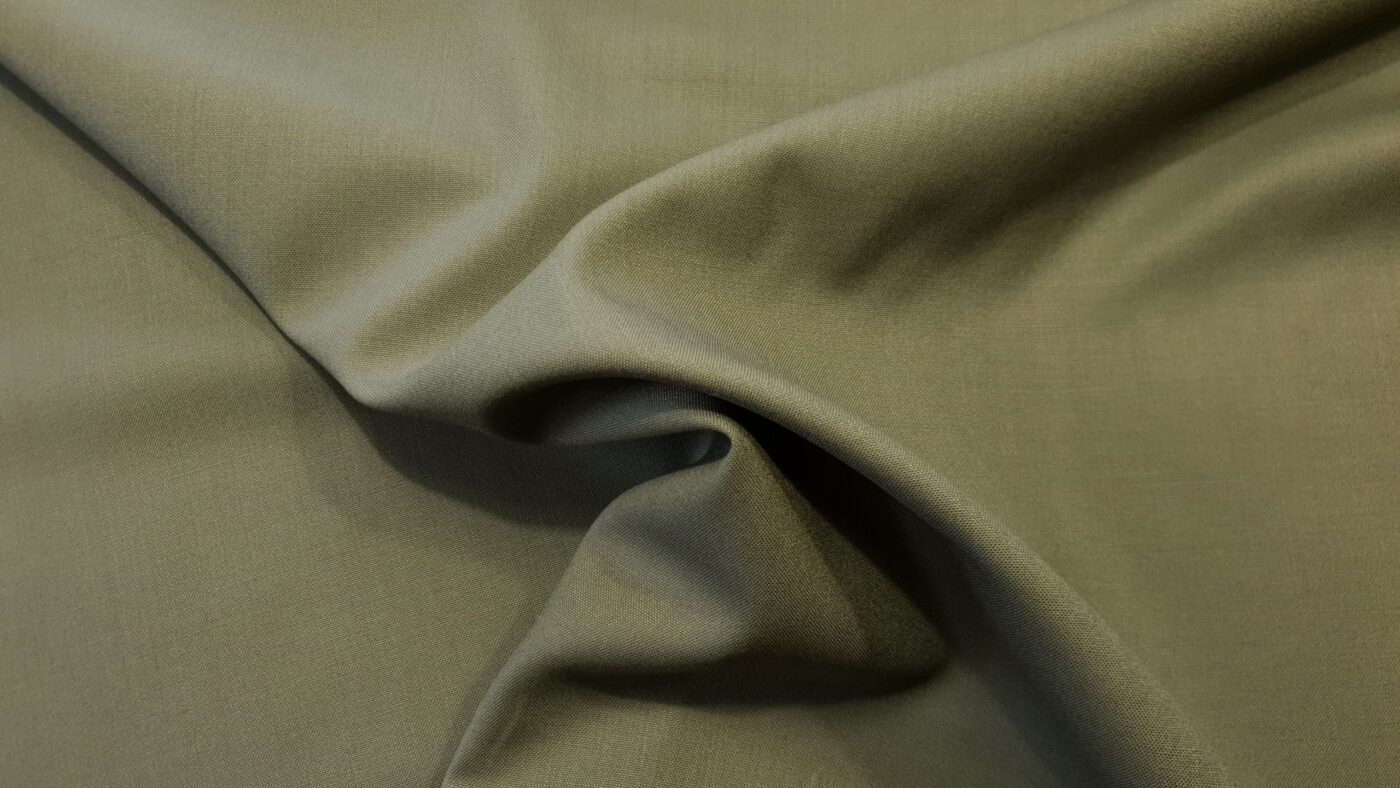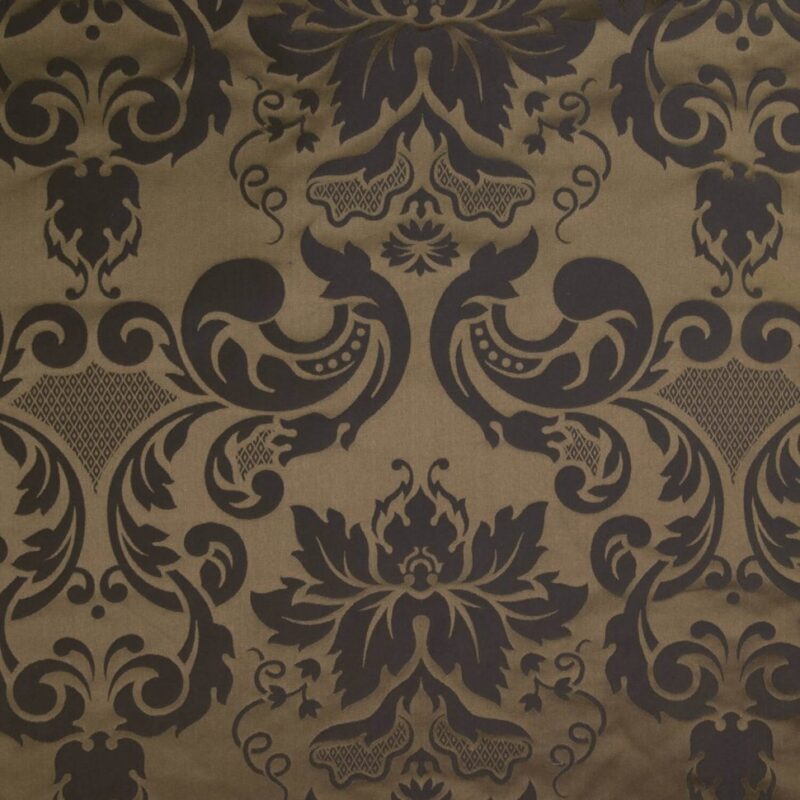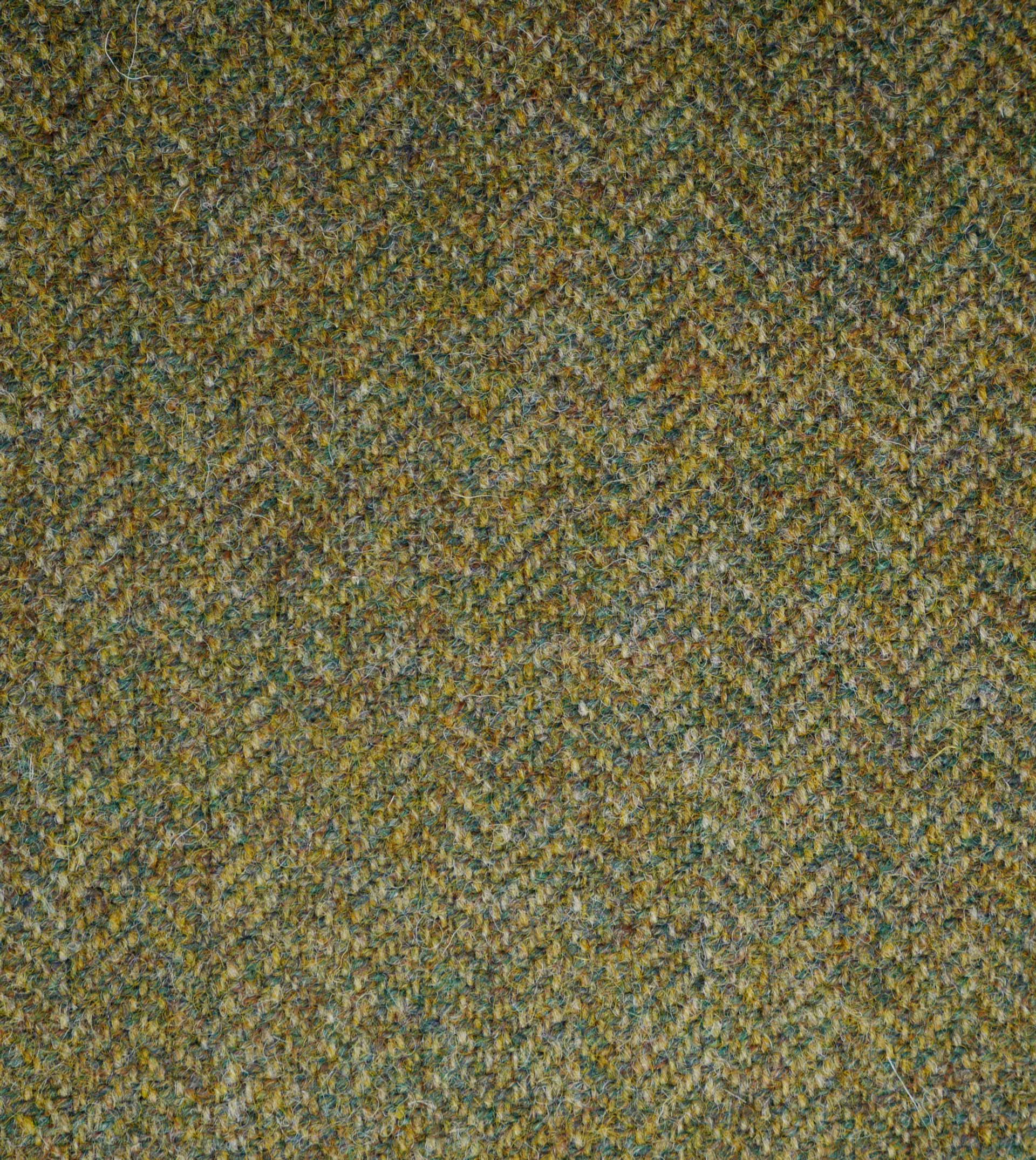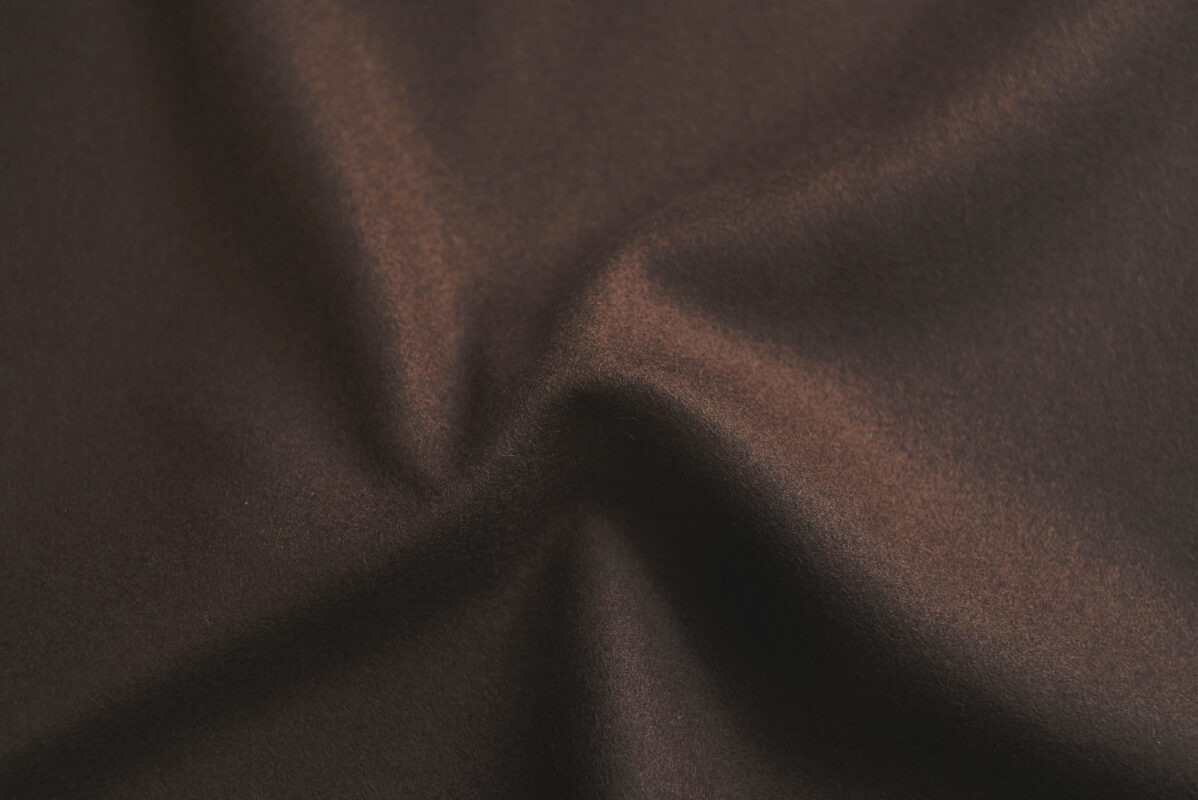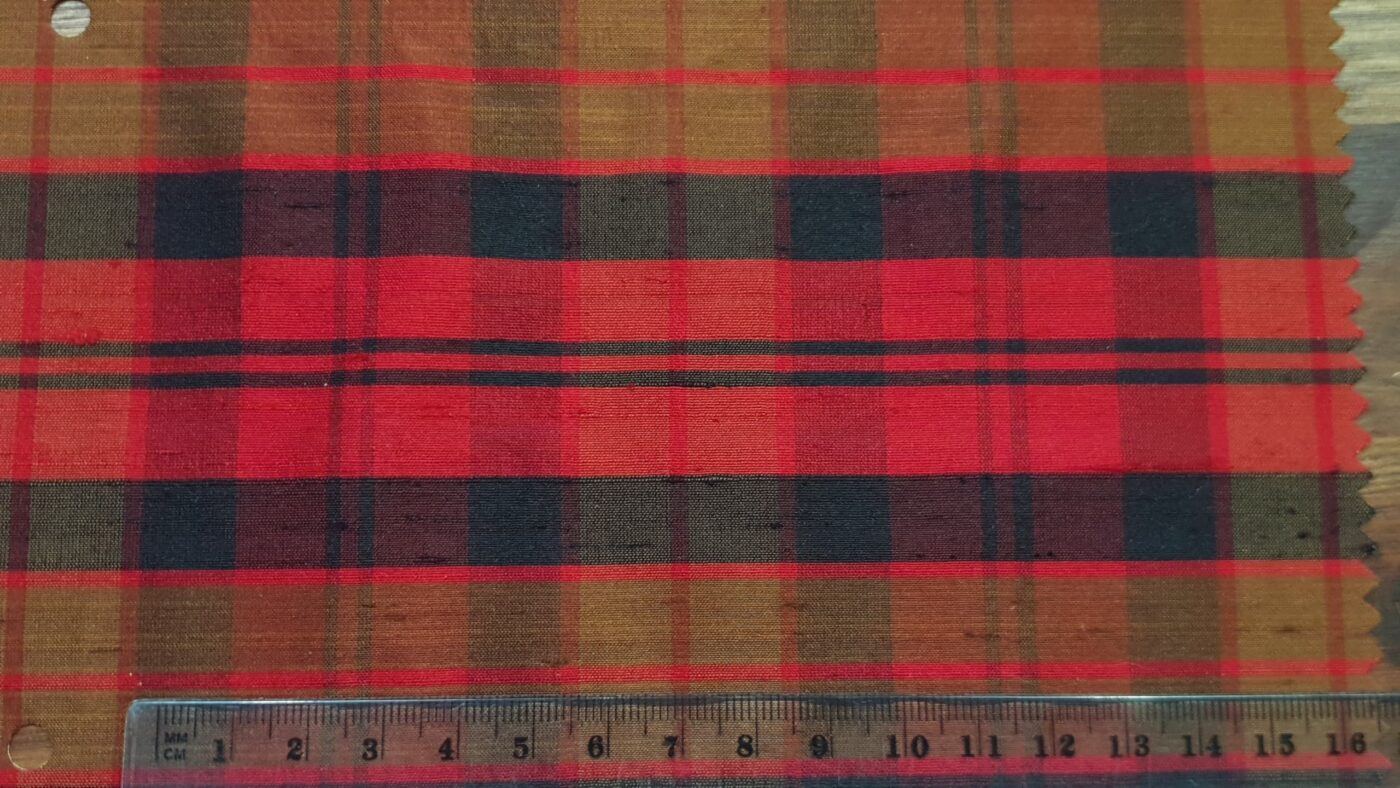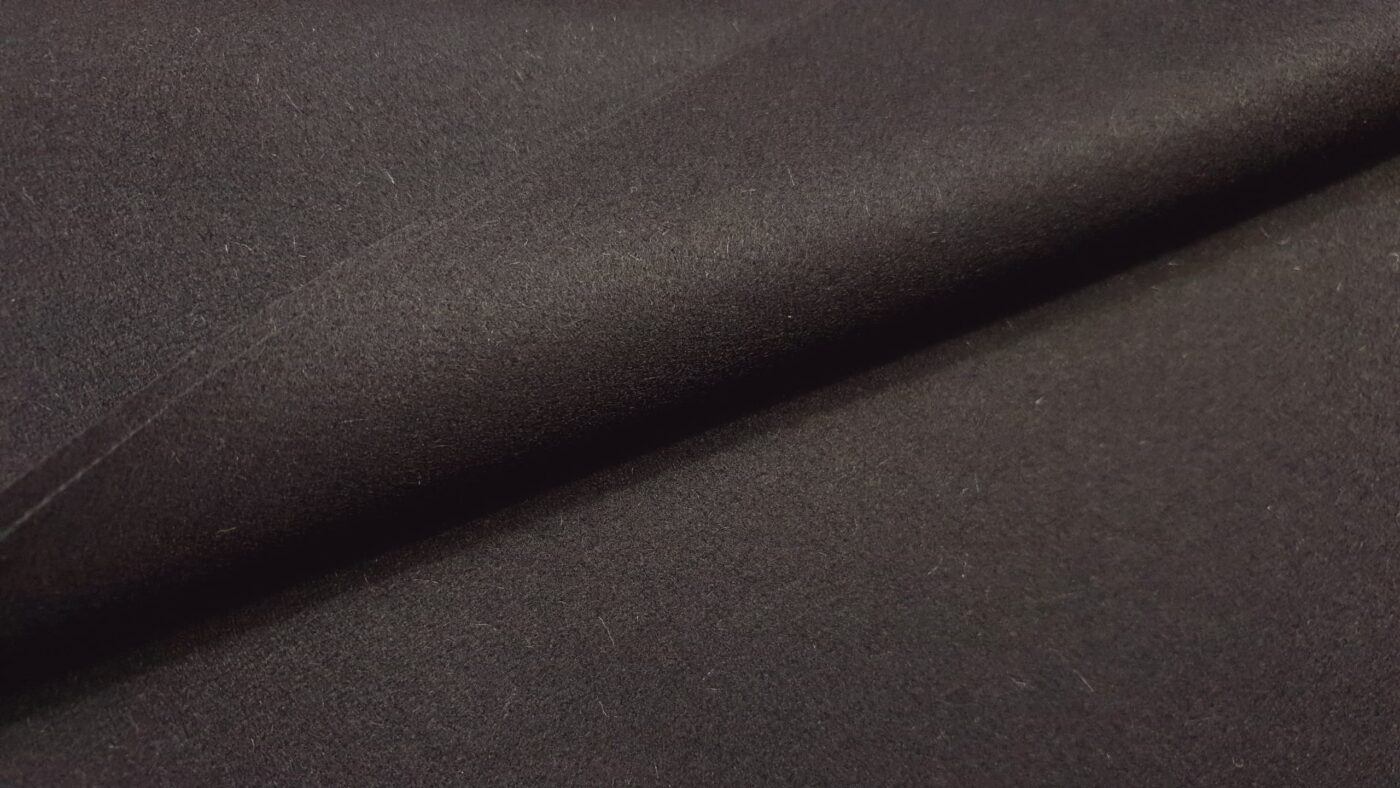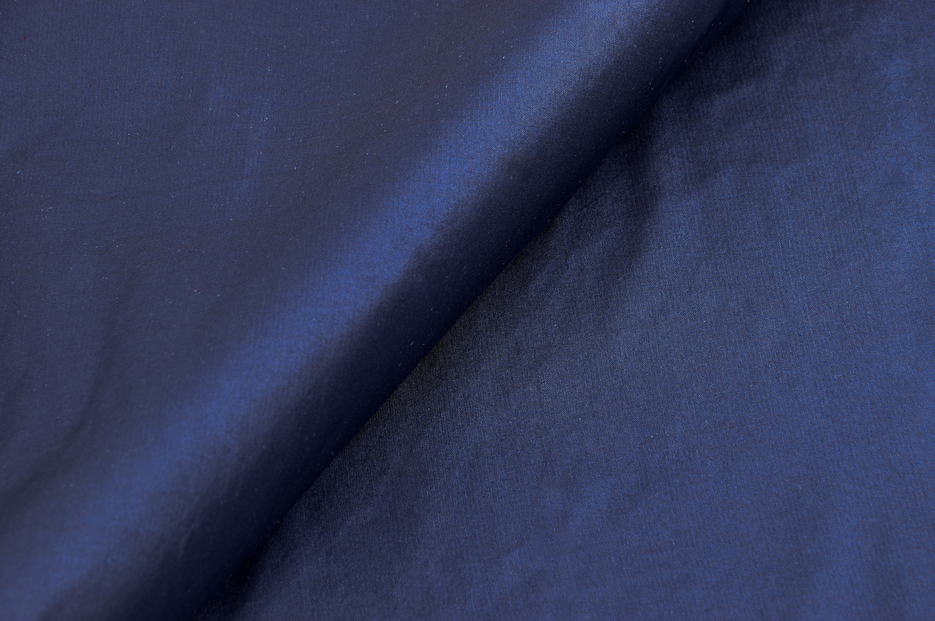Finding the right fabric can sometimes be a jungle. Here is a rough guide to which fabrics were used for different periods and also some color trends.
When it comes to fabric choices for the poor and the rich, it's not always obvious either. A woolen fabric can be both simple and cheap or very fine and expensive. It could depend on whether the fabric was homemade or a bought imported fabric, if it was dyed at home with local plants or dyed at a dyer with imported expensive plants. In certain periods and areas there have also been strict laws regarding what the various social classes were allowed to wear. Silk could for example be reserved for the nobility.
Är du osäker på vad du ska välja är du välkommen att fråga oss så ska vi svara så bra vi kan.
Viking age
700-1100 AD
Linne & hampa– For undergarments like tunics and underdress.
Diamond twillantkypert i ull– Use single color diamond twill. For apron dresses, tunics, pants, dresses, leg wraps.
Wool twill– Thin for tunics, dresses and pants. Thick for outer garments.
Wool tabby-– for tunics, dresses and pants
Melton- A heavy felted wool for heavy tunics, coats and cloaks.
Herringbone wool-– Not very common but a few fragments have been found. Use single color herringbone.
Striped wool-– Not very comon but exist, see guddal tunic.
Tartan wool– Large plaid for capes and blankets. Small plaids for tunics, aprondress ect but not super common. Avoid elaborate checks, the few ones found are very simple checks.
Silk– Enfärgad siden- taft eller dupion och brokad. Användes mest i form av remsor i dekorationer, troligen på grund av dess höga pris. Osäkert för hela plagg.
Medieval
1065-1500
Linen & hemp for shirts, underdresses, underpants and lining.
Wool twill Thin for tunics, dresses, hoses and also capes.
Wool tabby- for dresses, tunics and can also be used for hoses although its not as stretchy as twill.
Wool tartan- Not the most comon but exist in cotehardies for example.
Striped wool- Not the most comon but exist in cotehardies for example..
MeltonA heavy felted wool for heavy tunics, coats and cloaks.
Renaissance
1500-1600
Wool, linen and hemp for the working class and fine wool and silks for the wealthy.
Linen & hemp for shirts, underdresses, underpants and lining.
Broadcloth/wool tabby- till kläder allmänt. Finare kläde till välbärgade.
Wool twill for kirtles, jackets and pants.
Melton- Heavy felted wool for outer garments.
Solk brocade- kirtles, jackets and pants.
Silk velvet- kirtles, jackets and pants.
18th century
Wool, linen and hemp for the work
Linen & hemp for shirts, underdresses, underpants and lining.
Plain cottons- for shirts, underdresses and lining.
Thin cottons- Like muslin and voile. Used for scarfs and trims.
Cottons with patterns- for dresses, skirts, aprons, waistcoats.
Broadcloth/tabby wool for skirts, jackes, waistcoats and pants.
Melton- heavy felted wool for outer garments but also pants and waistcoats.
Plain silks- for dresses, jackets, waistcoats, pants and capes.
Silk brocades- for dresses, jackets, waistcoats and pants.
Silk velvet- for dresses, jackets, waistcoats and pants.
Silk chiffon & organza- for scarfs, headwear and trims.
19th century and early 1900
Linen & hemp for shirts, underdresses, underpants and lining.
Plain cottons- for shirts, underdresses and lining.
Cottons with patterns- for dresses, skirts, aprons, waistcoats.
Thin wools- till klänningar och kostymer.
Broadcloth/tabby wool for skirts, jackes, waistcoats and pants.
Melton- heavy felted wool for outer garments but also pants and waistcoats.
Plain silks- for dresses, jackets, pants and capes.
Silk brocades- for dresses, jackets and pants.
Silk velvet- for dress details, jackets, pants and capes.
Thin silks- for scarfs & details
To see our list with fabric names; klick here. här.
